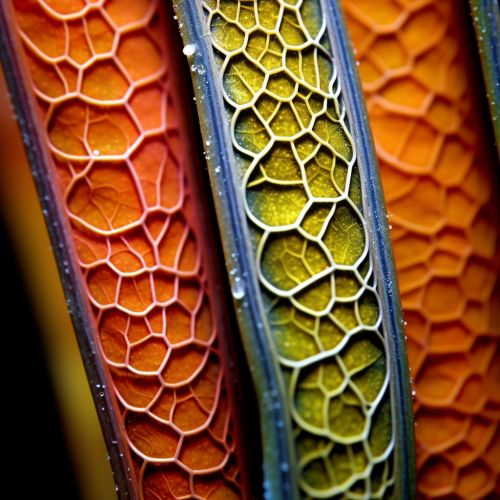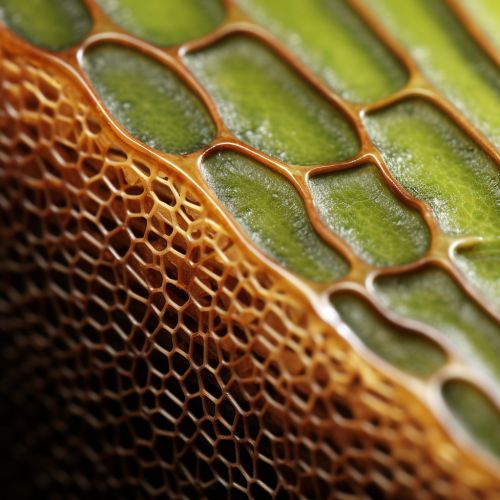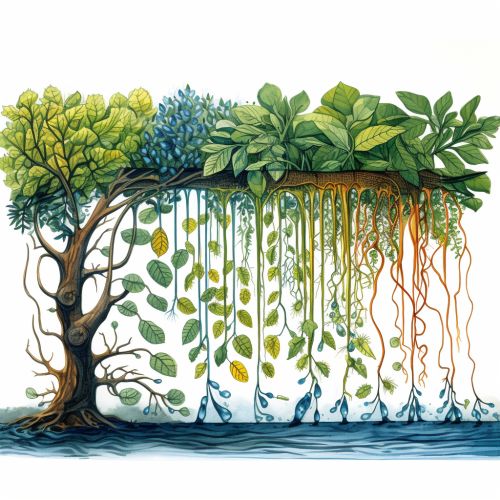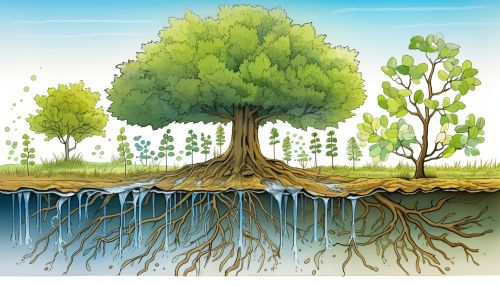Xylem
Introduction
Xylem is one of the two types of transport tissue in vascular plants, the other being phloem. The basic function of xylem is to transport water, but it also transports some nutrients through the plant. Xylem is made up of several types of cells. Tracheids are long, thin cells that are connected together to form a tube-like structure. Vessel elements are shorter and wider than tracheids and are also connected together to form tubes. Both tracheids and vessel elements are dead at maturity and act like a pipe to allow water to flow through.


Structure and Development
The xylem tissue is organized in a non-random manner; the vessels are bundled together, often surrounded by a sheath of parenchyma cells, and the tracheids are located on the periphery of the bundle. The xylem tissue is derived from the procambium during embryogenesis and from the vascular cambium during secondary growth. The development of xylem tissue involves a series of cell divisions, cell expansion, cell differentiation, and cell death.


Function
The primary function of the xylem is to transport water and nutrients from the roots to the shoots and leaves. However, it also has other functions. It provides mechanical support to the plant, due to the thickening of xylem cells. It also plays a role in the storage and transport of nutrients and water.


Types of Xylem
There are two types of xylem, primary and secondary. Primary xylem originates from the procambium during the primary growth of the plant. It includes protoxylem and metaxylem. Protoxylem is the first-formed xylem and is characterized by having relatively small tracheids and vessels. Metaxylem develops after the protoxylem but before secondary xylem and has larger vessels and tracheids. Secondary xylem is derived from the vascular cambium during the secondary growth of the plant. It is characterized by the presence of annual growth rings.


Xylem and Plant Health
The health of a plant is often reflected in its xylem. Diseases and pests can disrupt the function of the xylem, leading to wilting, yellowing of leaves, and eventual death of the plant. In addition, environmental factors such as drought, temperature, and soil nutrient availability can affect the development and function of the xylem.


